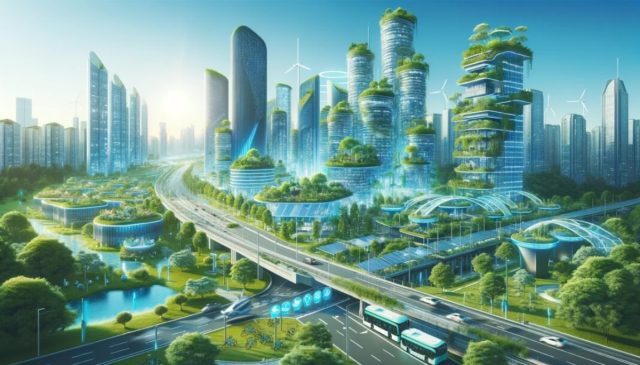In today’s rapidly evolving world, the foundation of a thriving region lies in its connectivity. A connected future—whether in terms of digital infrastructure, transportation, or community engagement—plays a pivotal role in fostering economic growth, sustainability, and social well-being. The future of any region depends on its ability to innovate and adapt, integrating modern technologies with traditional values to ensure inclusivity and opportunity for all. Building this connected future requires collaboration, investment, and forward-thinking strategies.
Embracing Digital Connectivity
Contents [show]
One of the most significant areas where regions can build stronger connections is in the realm of digital infrastructure. The COVID-19 pandemic accelerated the shift to remote work, online learning, and digital commerce, highlighting the critical need for reliable, fast internet connections across all areas. Ensuring that even the most rural or underserved communities are included in high-speed broadband access is essential.
Not only does digital connectivity support business and education, but it also enables access to critical services like healthcare and government resources. By prioritizing investments in fiber-optic networks, wireless technologies, and satellite internet, regions can close the digital divide and empower individuals with the tools to succeed in the modern economy. With an emphasis on smart cities and the Internet of Things (IoT), regions can optimize everything from traffic flow to energy usage, creating a more efficient and sustainable future for all residents. Ensuring that even the most rural or underserved communities have access to high-speed internet is essential, and working with a Tampa fiber internet provider can help bridge the digital divide by delivering reliable connectivity that supports businesses, education, and essential services.
Enhancing Transportation Networks
Equally important in building a connected future is the development of efficient, accessible, and sustainable transportation networks. The way people move within a region affects everything from daily commutes to the flow of goods and services. By investing in public transportation systems that are affordable and reliable, regions can reduce traffic congestion, lower carbon emissions, and improve access to opportunities for all.
Moreover, the rise of electric vehicles (EVs) and autonomous driving technologies presents new possibilities for transportation. Building the necessary charging infrastructure for EVs, expanding bike lanes, and adopting eco-friendly transport solutions are steps that regions can take to future-proof their connectivity. As more people move toward sustainable modes of transport, this will foster a cleaner, healthier environment while enhancing the overall efficiency of the region.
Strengthening Community Engagement
A connected future isn’t just about infrastructure—it’s also about fostering connections among people. Strong communities are built on trust, collaboration, and shared goals. Regional governments, businesses, and community organizations must work together to create spaces where individuals can actively engage with each other and contribute to decision-making.
This can be achieved through local initiatives, public forums, and digital platforms where residents can voice their opinions and participate in the planning of regional development projects. A thriving region depends on the well-being of its people, and when residents feel empowered to shape their communities, it fosters a sense of ownership and pride. Social cohesion leads to greater community resilience and an overall stronger region.
Fostering Innovation and Sustainability
To truly build a connected future, regions must be forward-thinking in their approach to innovation and sustainability. Incorporating green technologies, such as renewable energy sources and sustainable agriculture practices, ensures that economic growth doesn’t come at the expense of the environment. By encouraging clean tech industries and supporting local innovators, regions can create sustainable jobs and industries that are both economically viable and environmentally friendly.
Additionally, supporting local businesses, particularly those in the tech, education, and healthcare sectors, fosters a dynamic, diversified economy. Regions that invest in research and development, foster entrepreneurship, and prioritize education create an environment ripe for innovation and collaboration. This will ensure the region is not only connected in terms of technology and infrastructure but is also adaptable and resilient in the face of future challenges.
Conclusion
Building a more connected future for a thriving region is an ongoing process that involves careful planning, innovation, and inclusivity. By investing in digital connectivity, enhancing transportation, strengthening community engagement, and fostering sustainability, regions can ensure that they not only survive but thrive in the future. It is through these efforts that we can create regions where everyone has the opportunity to succeed, innovate, and contribute to a prosperous tomorrow.


